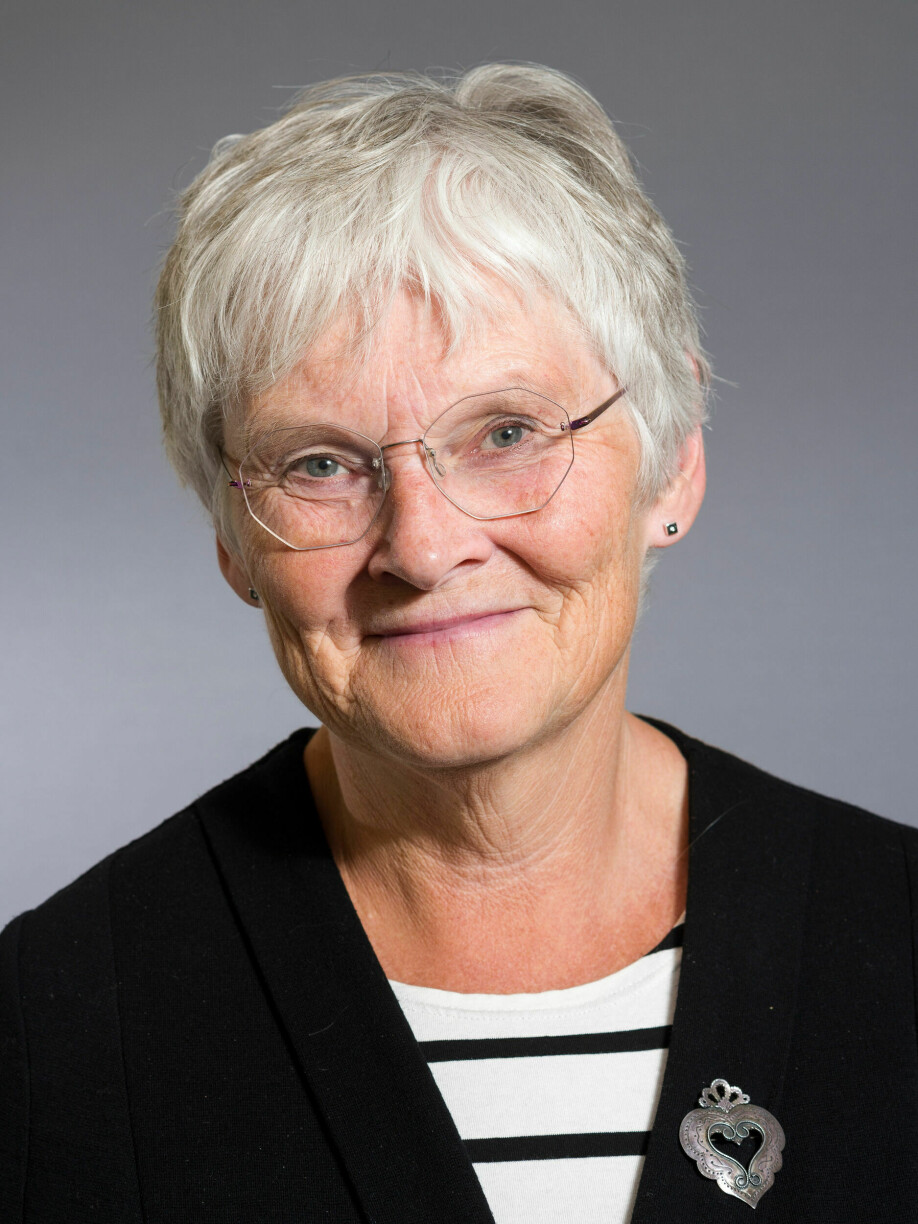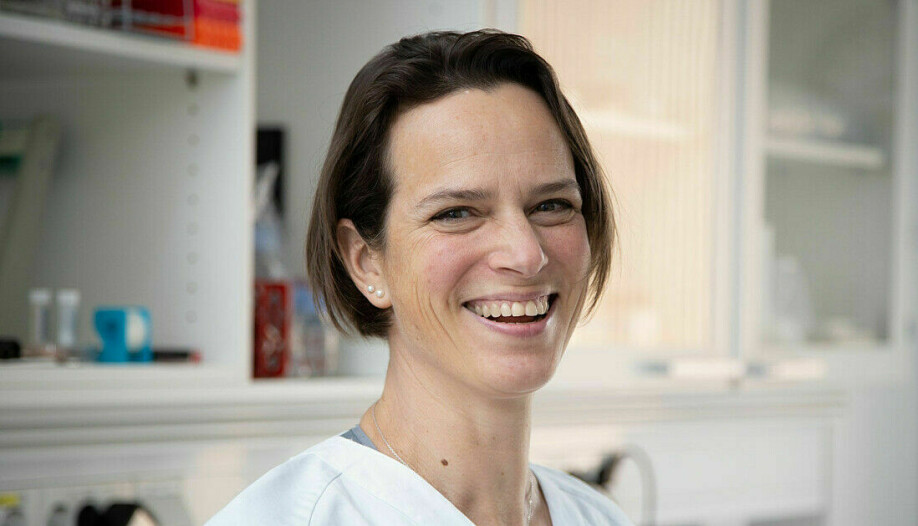
People with fibromyalgia often feel that people don’t believe them
Every second fibromyalgia patient is afraid to seek help, a new Swedish study shows.
People who suffer from fibromyalgia experience a lot of pain. They describe this pain as deep, intense, aching, and burning. The pain is usually in the muscles.
So what do healthcare professionals do when a person comes in with these symptoms?
Swedish researchers have now asked patients who have fibromyalgia about their experiences with healthcare professionals.
The answer — that patients feel poorly understood — has been published in the journal Open Nursing.
Don’t dare go to the doctor
Fibromyalgia is a syndrome that affects many people — probably around 3 per cent of the population. A predominance are women.
Although the disease is not uncommon, little is known about its causes.
British researchers believe that fibromyalgia may be an autoimmune disease, in which the immune system itself attacks the body's own cells.
Some people think it may be stress related, while others think it is due to inflammation in the body.
But no one knows for certain.
A fear of seeking help
The experience of having fibromyalgia is also affected by the fact that both the diagnosis and treatment for the disease are so uncertain.
At least that’s what new Swedish study shows, based on the experience of 409 people with fibromyalgia. One-third reported that the treatment they receive is poor. Slightly fewer feel that they are not taken seriously.
Almost half (47 per cent) said they are afraid to seek treatment for fibromyalgia, and that they believe doctors and nurses don’t understand the diagnosis.
As many as 54 per cent feel that healthcare professionals don’t know how to help them.
Norwegian patients have tried most things
Anne Marit Mengshoel is a professor at the Institute of Health and Society at the University of Oslo.
She doubts that Norwegian patients with fibromyalgia are afraid to seek health care.
“These numbers may indicate that patients have tried most things,” she said to sciencenorway.no. “But they are not happy with the help they get.”
In a study from 2018, Mengshoel examined how Norwegian patients experienced getting a fibromyalgia diagnosis. The results showed that they generally had negative experiences with the health service. This was true in Norway as well as in many other countries.
The study was published in the scientific journal Chronic Illness.
Low prestige

“The reason behind this is probably not because the health service has bad people. Unfortunately, health service provides lack knowledge in general about the illness, so they feel backed into a corner,” she said.
In a study from the University of Oslo, fibromyalgia came in last when Norwegian doctors and nurses were asked to rank diseases according to prestige.
The doctors and nurses ranked heart attacks, brain tumours and leukaemia as the most “prestigious” diseases to treat.
Diagnosis comes too late
But why is it so difficult to treat fibromyalgia?
Astrid Woodhouse is a researcher at the Norwegian University of Science and Technology (NTNU) and a physiotherapist at the pain clinic at St. Olavs Hospital.
She says that investigating fibromyalgia is time consuming. This may be partly because it is characterized by many symptoms that are also common to a number of other diseases.
“This can trigger the need for several examinations, to exclude other diseases,” she wrote in an email to sciencenorway.no.
Woodhouse says that there has been — and still is — uncertainty and disagreement among both researchers and clinicians about what fibromyalgia really is and which patients meet the diagnostic criteria.
Patients have described experiences with healthcare professionals who offered completely divergent explanations for the patient’s problems, and where some have said they think that fibromyalgia does not exist.
“Patients often describe the painful experience of not being believed,” Woodhouse wrote.
New criteria for diagnosis
In 2016, new criteria were introduced for how doctors should diagnose fibromyalgia, which led to more men being diagnosed, among other things.
The biggest difference between the old diagnostic criteria and the new is that doctors are no longer supposed to solely look for specific areas of inflammation, called trigger points, on the body.
Now they are also supposed to use a form to catalogue the patient’s symptoms.
If the patient has a certain number of symptoms, they are diagnosed with fibromyalgia.
These symptoms can include fatigue, difficulty concentrating, difficulty sleeping, headaches, depressive symptoms and irritable bowel syndrome.

Will hopefully provide better treatment
“Doctors and researchers used to believe that fibromyalgia was an inflammatory or a rheumatic disease without inflammation. Now they think that it’s a hypersensitivity in the nervous system that makes it difficult to regulate pain,” Woodhouse says.
“The new diagnostic tool will hopefully make it easier for Norwegian doctors to make a correct fibromyalgia diagnosis at an earlier stage in the illness,” she said.
One of the problems with a fibromyalgia diagnosis is that although there are many symptoms, there is often no illness, injury or other concrete explanation for the pain and ailments that patients experience.
A lot of personal effort on behalf of patients
Once patients have been diagnosed, treatment begins.
But what are the treatments?
There is currently no medical treatment for fibromyalgia that makes people healthy, according to the Norsk Helseinformatikk website. Today, the disease is treated with physical exercise, medications commonly used for depression, information and education, behavioural therapy and a combination of all of these.
But so far, these treatments have only had a moderate or short-term effect.
“Advice from health professionals, for example, often involves people doing much on their own, and training. However, this advice has proven difficult for many fibromyalgia patients to follow,” Woodhouse said.
Patients often think the advice doesn’t help, or they experience negative effects from the treatment, she says.
In a study from 2010, researchers from Trondheim showed that overweight women had almost twice the risk of getting fibromyalgia as women who were a normal weight. At the same time, it showed that exercise had a very limited effect.
Is there hope?
So what are the future prospects for patients with fibromyalgia?
Anne Marit Mengshoel says she feels both hopeful and discouraged when it comes to what patients can expect.
She describes studies that indicate that stress plays a major role in the syndrome, and that the long-term problems fibromyalgia causes help to prolong the syndrome.
Mengshoel is herself involved in a project where clinicians and researchers have joined forces to create an approach for patients.
“This is a patient education programme that presupposes that patients who discover a connection between their ailments, everyday life and their own hopes for their lives are in a better position to do something about their situation,” she says.
Mengshoel published a study on the programme earlier this year in BMC Health Services, which reported preliminary good results.
“But it’s too early to say that this is the solution. In any case, I don’t think there will be a pill or any other quick fix,” she said.
“People have been sick for a long time before they are diagnosed and will have had a lot of negative experiences over time,” she said.
From specialists to general practitioners
Previously, the responsibility for patients with fibromyalgia lay with the Norway’s specialist health service.
This responsibility has now been transferred to the primary health service, meaning general practitioners.
Mengshoel is not sure if this is a good idea for patients.
“It will take time to build up offers, because the primary health service is organized in a completely different way,” she says.
"These are complicated problems that patients struggle with, and they need experienced, knowledgeable people who realize that this will take time and have the opportunity to give them help in an educated way," she says.
Translated by Nancy Bazilchuk
Read the Norwegian version of this article on forskning.no
Reference:
Rebecka Hasselroth et al.: Can Someone as Young as You Really Feel That Much Pain? - A Survey on How People With Fibromyalgia Experience Healthcare in Sweden. SAGE Open Nursing. 2021. DOI: 10.1177 / 23779608211026145
Egil Fors et al.: Fibromyalgia 2016 criteria and assessments: comprehensive validation in a Norwegian population. Scandinavian Journal of Pain. 2020. Summary.































